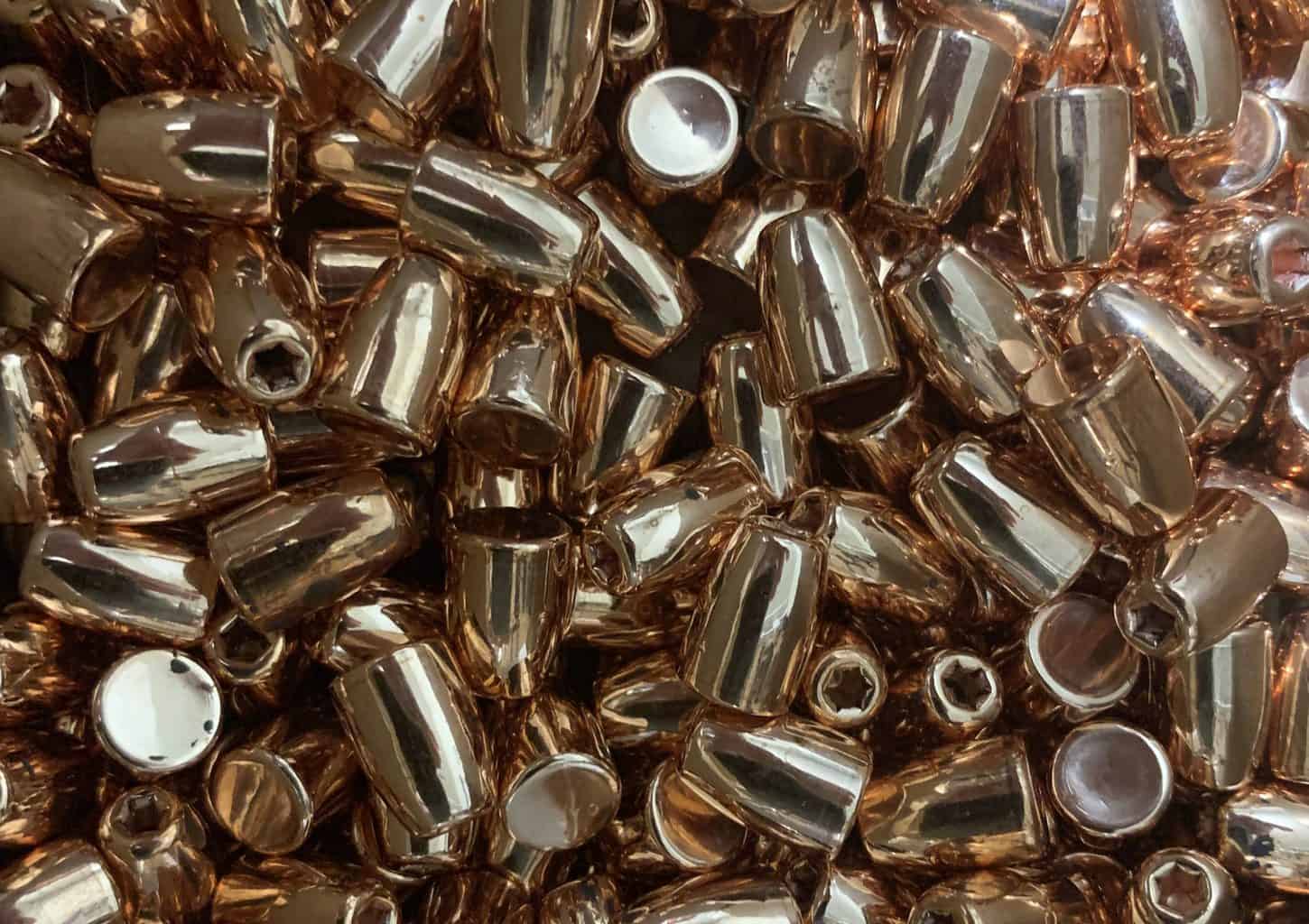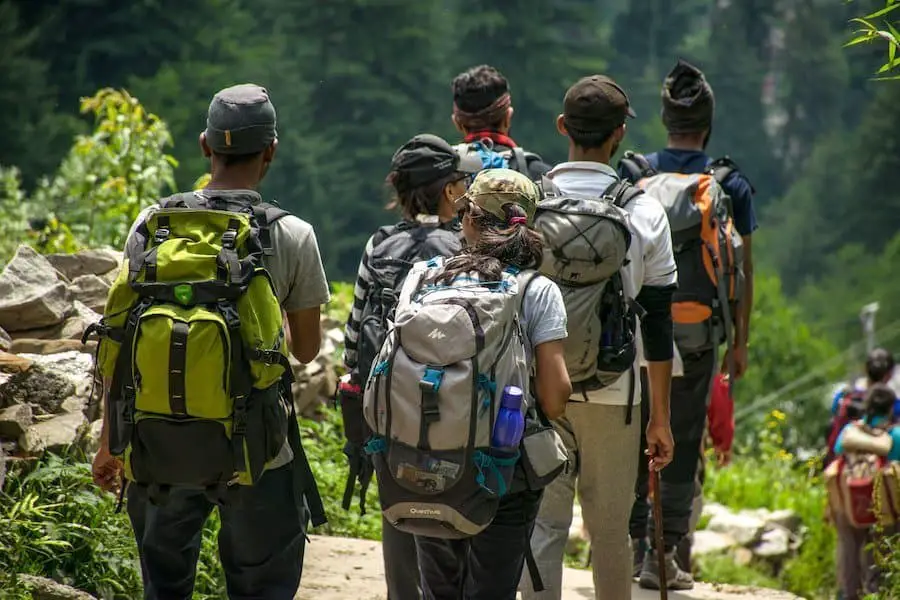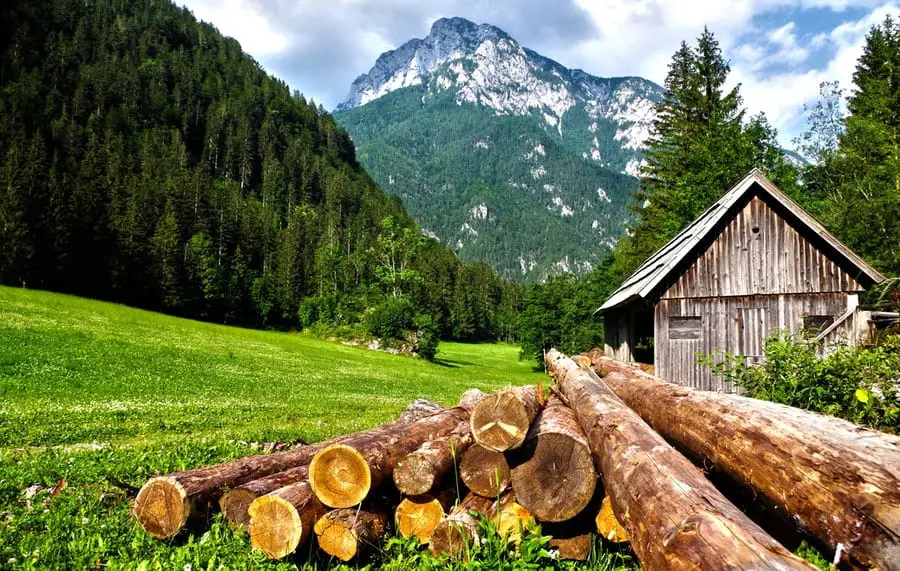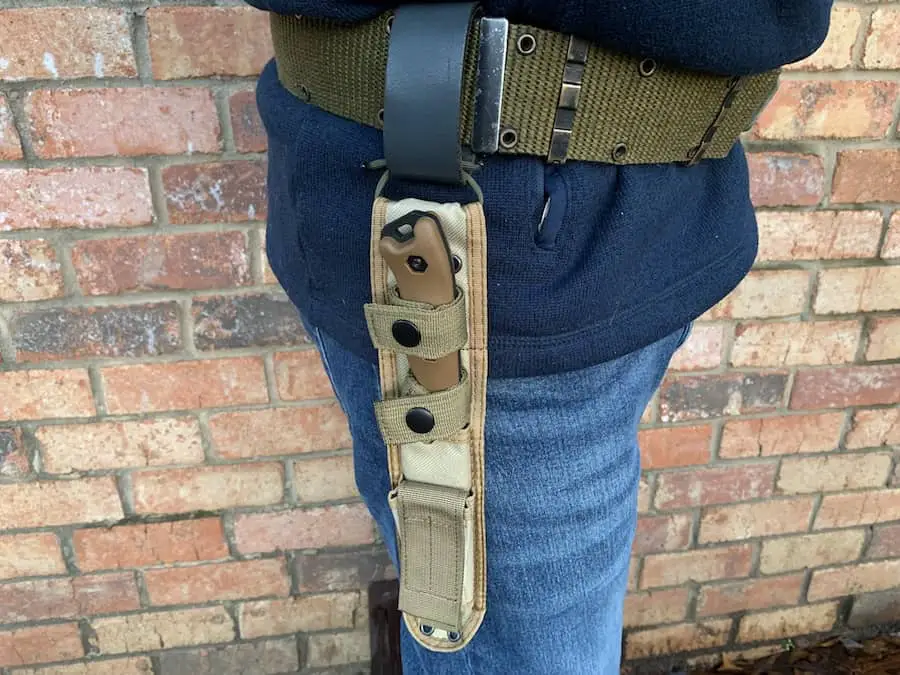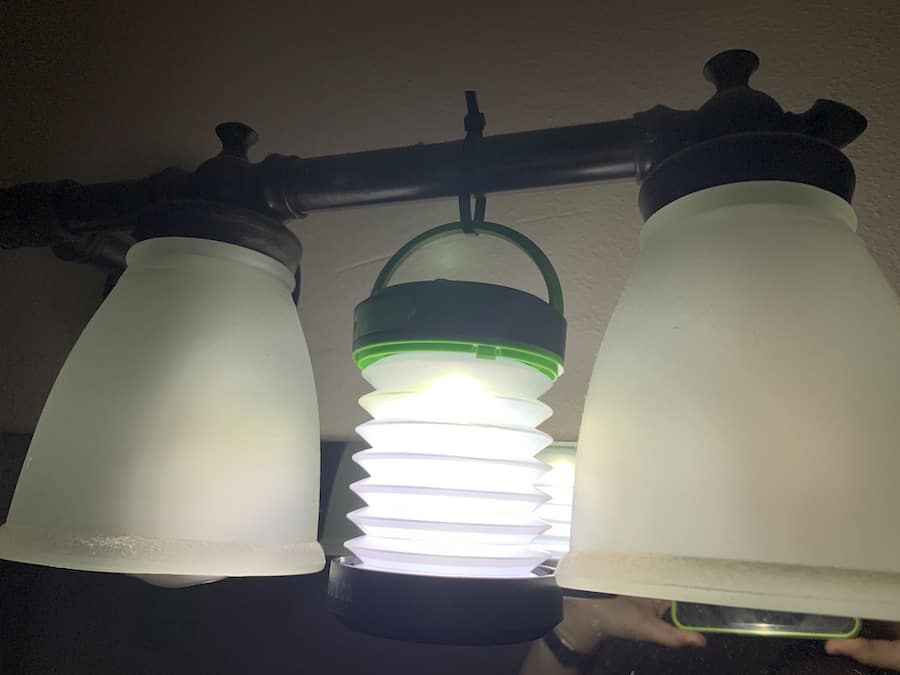How Do Preppers Store Water? Storage Ideas and Solutions
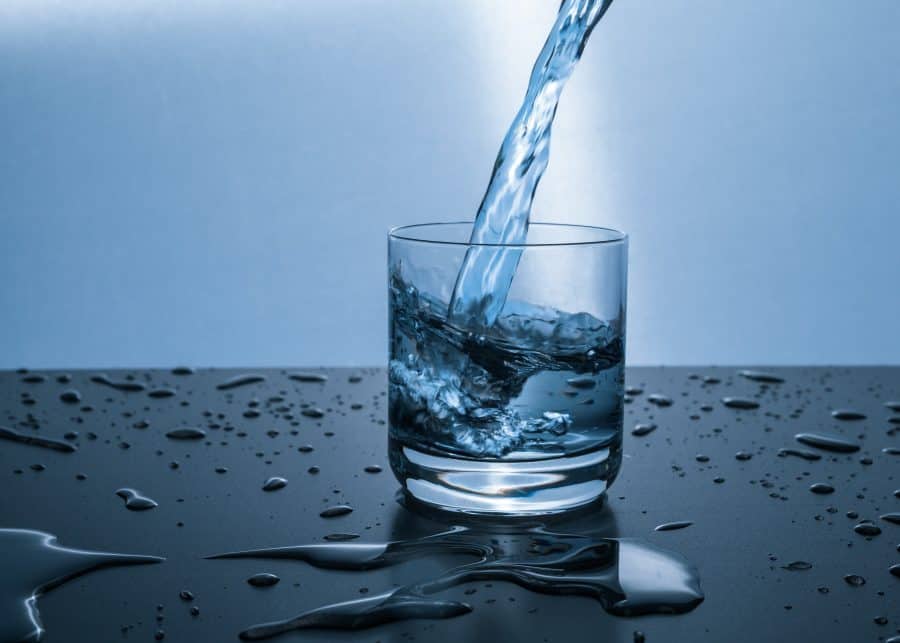
Having a well-stocked and diversified water storage plan is a vital part of a good preparedness strategy. Not having access to water can kill someone within three days, and drinking from a contaminated water source can be fatal as well. Because of this, every prepper should store an appropriate amount of water for themselves and their loved ones.
Most preppers store water by keeping packages of bottled water and filled portable water containers in their home. More serious preppers store water in barrels and cisterns and may even develop rainwater harvesting systems or dig wells.
When developing a water storage plan, you need both stored water and the means to replenish your water supply. Here are some ideas to help make sure that you have a good prepper water storage plan.
How Much Water Should A Prepper Store?
Before you start developing a water storage plan, you need to have an idea of how much you will need. The general rule within the prepper community for water storage is that you need one gallon of water per person per day.
Water Needs= (1 gallon) X (Number of People) X (Number of Days)
Although this is a good starting point, it does not give you a true representation of the amount of water you will actually need. It only takes into consideration how much water you need to drink. It does not include water needed for personal sanitation or even cooking. For example, if you plan on eating freeze-dried foods during an emergency, you will need water to prepare it. This will increase the amount of water you need to store.
Another factor that could increase how much water you need to store is your area’s climate. If you live in a hot area, your body will lose more moisture from sweating, making it necessary to store more water. Even if you stay indoors as much as possible, a grid-down situation would knock out air conditioning, increasing your need for water to keep your body cool.
Check out my article, How to Stay Cool During a Power Outage. It has ideas that you can use to stay comfortable and reduce the amount of water your body will need to stay cool when the air conditioner is out.
Store More than You Think You Need
During an emergency, things probably won’t go as planned. Because of this, it is a good idea to store more water than you think you may need. Containers may become damaged and water sources may become contaminated, so have a backup plan.
Many people who live near a lake or some other body of water will likely include it in their water storage plan. However, many other people will have the same idea. If there is civil unrest or conflict in your area, you may need to avoid sources such as these. Having a large amount of water stored on your property will reduce the amount of time you have to spend at places such as these.
Don’t Forget Water for Your Pets
Another important thing a prepper needs to consider when developing a water storage plan is the needs of their pets. We have two dogs. The first, a German Shepherd, drinks at least half a gallon of water per day. The second, a Shih Tzu, drinks at least a quart. Both of them are inside all day (except bathroom breaks) and live a fairly sedentary life.
If your dogs are outside and active, they will require much more water than our dogs. For larger dogs, it wouldn’t be a bad idea to have 2-3 gallons of water per day. This is especially true if you live in an area with a hot climate.
Prepper Water Storage Breakdown
Bottled Water (1-2 Weeks)
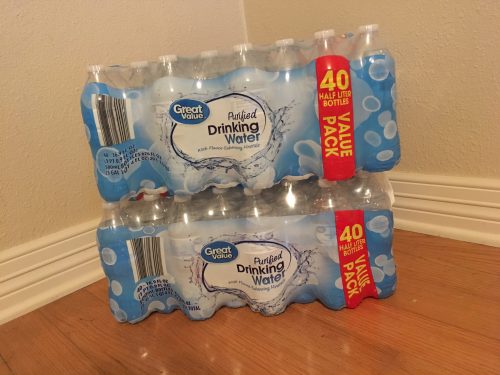
The first layer of my prepper water storage is bottled water. I recommend keeping 1-2 weeks of bottled water ready for emergency use. If you use bottled water regularly, your 1-2 week emergency supply should be in addition to what you keep for normal use. For example, my wife and I usually go through 1 or 2 cases of bottled water each week. So for normal use, we should have 2 cases ready to go. Based on our normal usage, a 2-week water supply would require 4 cases of bottled water. This means we would need 6 cases total to last us a normal week and have a two week supply set aside.
When storing bottled water, it is best to rotate what you store. The thin plastic that companies use for their bottles is not suitable for hard use or long term storage. Because of this, I try to avoid keeping any case of water more than a month before I use it. Although bottled water shouldn’t be considered the backbone of your prepper water storage, it is convenient and portable. If you have a large quantity, it is a good barter item and can be handed out if you want to help someone.
Avoid Gallon Jugs
When I first started prepping, I made the mistake of purchasing one-gallon jugs for my water storage. Although they are a cost-effective way of storing water, they aren’t the best way to do so. The main issue with them is that you cannot stack them. As a prepper, you need to use your storage space wisely. Not being able to stack them will reduce the amount of water and other preps that you can store.
The other problem with the gallon jugs of water is that they are extremely flimsy. Some of the jugs that I bought ruptured, resulting in a complete waste of the water inside. At least with individual bottles, if one or two busts, it isn’t as much to clean up, and you haven’t lost as much.
Portable Water Storage Containers (1-2 Months)
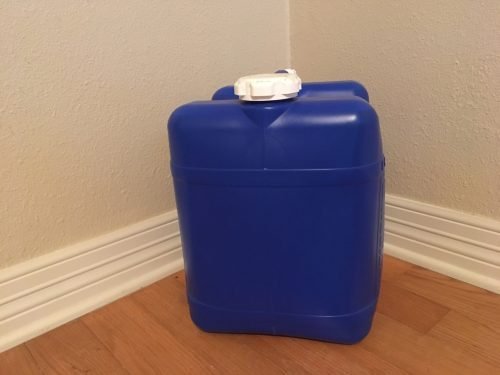
Portable water containers are a good addition to any prepper water storage plan. They will usually hold around five to seven gallons. Anything larger than this will be too heavy for most people to move. My favorite portable water container is the Reliance Aquatainer. The water brick is another popular option, while many preppers prefer a jerrycan design.
I prefer the Aquatainer for a couple of reasons. The first is cost. I can find them at my local Walmart for less than $15.00. I also like the spigot design. It stores inside of the Aquatainer when not in use, making it hygienic and a little harder to damage. To prevent dust from getting inside, I tape a small piece of plastic to the top of the spigot to cover it.
I also like how convenient the Aquatainer is to use. After setting up the spigot, you can leave it on a table and use it like a faucet. This is especially nice while camping because it makes brushing your teeth, washing your hands, and doing the dishes much easier. When not in use, you can set it upright to eliminate any chance of a leak.
Portable water containers such as the Aquatainer are designed to be easy to store and transport. I like to keep at least one in the back of our Rav4 when my wife and I go on long road trips. This gives me a little extra peace of mind when we travel. One seven-gallon Aquatainer will provide us with around three and a half days of water using the one gallon per person per day rule.
How to Store Water Containers
At home, I store my Aquatainers out of the way in the pantry or on shelves in our laundry room. It is best to empty, rinse, and refill these types of containers every six months. This will help reduce the chances of bacteria and algae growing in your water containers.
How Much Water Should You Store in Containers?
It is a good idea to store somewhere between one and two months of water in containers such as these. If you have to bug out, you could load up at least some of them and take them with you. Also, having multiple containers allows you to keep track of how much water you have used.
Store Water at the Beginning of an Emergency: Water Bob or Aqua Pod
If you have a bathtub, a Water Bob or Aqua Pod is an excellent tool to supplement your prepper water storage. Both products are large plastic bladders that fit inside your bathtub and are filled with water from your tub’s faucet. When you fill up the container, it expands to fit the shape of your bathtub.
The structure of the bathtub reinforces the water bladder to help prevent rupturing. These are a much better option than simply filling your tub with water. The plastic bladders protect your water from bacteria, chemicals, belly button lint, and any other grossness that may be lurking in your tub.
Systems such as these do have a couple of drawbacks. First, they are single-use products. They are meant to be filled up, be used as a temporary reservoir, emptied, and then thrown away. Attempting to store them after use is not a good idea since bacteria will grow in them.
Also, systems such as these must be filled with water before an emergency or during its early stages. If you don’t have time to fill it up or you fail to do so, it won’t do you any good. However, if you fill it up unnecessarily, then you have wasted it. Even with these drawbacks, they are still great additions to your water preps. Both the Water Bob and Aqua Pod can hold several weeks of water but take up very little space prior to use.
Water Storage Barrels or Tanks (3+ Months)
If you have enough space, water barrels or tanks are a great addition to your prepper water storage. Although they are expensive, they have a large capacity and allow you to store water long-term. 55 gallon drums/tanks and 250-gallon tanks are usually small enough to fit in a corner of your garage.
Water cisterns are huge storage tanks that can hold a few thousand gallons of water. These are buried underground and are frequently tied to a rainwater harvesting system for irrigation purposes.
If you are considering purchasing containers such as these, it is very important that you choose the right ones. They must be made of food grade made materials. In addition, if you buy a used container, it should not have ever been used to store chemicals. Although we do not think of plastic as porous, chemicals can embed themselves into it.
Water stored in barrels or tanks will also require treatment to prevent the growth of bacteria an algae. You can use either water treatment drops, such as Water Preserver, or bleach to do this. When using bleach, add two drops of water per quart or liter. If using water treatment drops, follow the instructions on the packaging. If you are storing tap water, this may not be necessary, but it probably wouldn’t hurt anything either.
Rainwater Harvesting System
One of the best ways to store water is through a rainwater harvesting system. Although a full system can be very expensive, starting small can be done without spending too much money. You can install one barrel onto a downspout and then add other barrels to the system as funds allow. This is a very economical way to start supplementing your prepper water storage. If you live in an area with abundant rainfall, it would be a good option for long-term water storage and renewal. You can find rainwater barrels by clicking here.
Before you install a rainwater harvesting system, be sure to check your state and local laws. Some states, such as Colorado, do not allow rainwater harvesting or require a permit. If you intend to drink water from your system, be sure to treat it first. That water has landed on your bird-poop infested roof and gone through slimy gutters before being stored in a barrel. You will definitely want to purify it before using it.
In addition to providing drinking water, rain harvesting systems also work well for garden irrigation. Using a rainwater harvesting system for this purpose would allow you to keep your garden alive without using up your stored drinking water.
Quick and Cheap Rainwater Harvester
Even if you cannot install a full rainwater catchment system, you can rig one together fairly quickly if necessary. All you need is some tarps and plastic storage bins. Set the tarps up in the open and angle them like a roof. Set the plastic tubs underneath so that water will run off the tarp and into the tub.
Well (Indefinite)
Probably the best long-term water storage option for a prepper is a well. One of the best things about them is that they allow people to be independent of a municipal water supply. Many people who do not consider themselves preppers already use a well as the primary water source for their homes. This is mainly people who live in rural areas who do not have access to a city water and sewer system.
Although it is nice to have a private water supply, wells do have a few drawbacks. If you have a well, you are at the mercy of whatever large concentrations of minerals may be in your soil. I have been places where I come out of the shower smelling like rust due to the area’s high iron content. If you are using well water, it is probably a good idea to have filters installed on your shower heads and faucets.
Another problem with a well is that if people have one, they assume that their water needs will be taken care of in an emergency. Don’t fall into this trap. Underground water sources could become contaminated by chemicals or other contaminants. Be sure that you have additional clean water stored in portable containers or barrels.
Having a mechanical well pump is a good idea in case you are no longer able to use the electric pump that would normally move the water from the well to your home. If you do this, be sure you know how to install and use your mechanical pump in case you need it. During an emergency, you won’t be able to run down to Home Depot or Lowes to pick up supplies and tools, so make sure you have the needed supplies ahead of time.
Other Water Sources
Ponds, Lakes, Creeks, and Rivers
As a prepper, it is a good idea to know where large man-made or natural water sources are. These include ponds, lakes, creeks, and rivers. These can be valuable water sources for you and your family, however, using them comes with some risks.
Be aware that water sources such as these will likely become filled with biological and chemical contaminants during a disaster. People will likely bathe themselves and clean clothes in them, and may even use them as a dumping ground for human waste. Because of this, any water you retrieve from these sources will need to be carefully and thoroughly purified.
Check out my article, How to Purify a Contaminated Water Source. It details steps you can take to reduce the chances of becoming sick from waterborne illnesses.
Hot Water Heaters
During an emergency, don’t forget about your hot water heater. Depending on its size, hot water heaters can hold up to 80 gallons, although most will hold between 40 and 50 gallons. Any water that you retrieve from it will already be safe to consume. Although it is only a short-term solution, it could still be helpful.
Decorative Ponds (Koi Ponds, Fountains, etc.)
If you have a decorative pond in your yard, it could serve as a suitable makeshift water source. Just be sure to purify any water before you drink it. Although small decorative ponds don’t usually hold too much water, they can easily be refilled with rainwater by setting up tarps to channel water into them.
Swimming Pools
Swimming pools could also be valuable long-term supplies of water during an emergency. It may technically be safe to drink water from a pool, due to the chlorine killing any biological contaminants. However, I would recommend running it through some sort of filtration system first. The purpose of this would be to remove as much of the chlorine as possible.
Also, during a prolonged emergency, a swimming pool may turn into a backyard bog. Modern swimming pools require electric pumps and other devices to keep them clean. The existing chlorine will also lose its effectiveness over time. If you have seen a swimming pool that has been neglected, you know how disgusting it can be.
For these reasons, if you plan on using a swimming pool as a water source, be sure to have a good filter, such as the Berkey, which is mentioned below. However, if your swimming pool uses saltwater, normal filters will not work. You would need a desalinator to make your pool water drinkable.
Water Filters
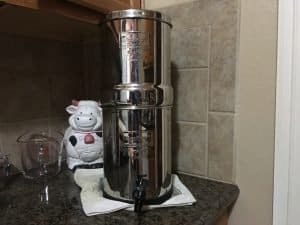
Even if you have thousands of gallons of clean water stored, you still need to have the ability to filter and purify water if necessary. For home use, I use a Berkey water filter. They are available in various sizes to suit user needs. Berkey claims that their “Black Berkey” elements are powerful enough to remove viruses and numerous chemicals. For this reason, many consider Berkey filters to meet the definition of a “water purifier”. This is a much higher rating than something labeled a water filter. Water filters will usually only remove bacteria, sediment, and large particles. However, a water purifier can remove viruses, chemicals, heavy metals, and other contaminants.
You can find Berkey Water Filters by clicking here.
Related: Berkey Water Filter Review
While I use my Berkey filter for home use, it is too large to be carried in a bugout bag or on road trips. For situations such as these, I prefer a Sawyer filter. Models such as the Sawyer Mini and Sawyer Squeeze have 0.1 absolute micron filtration ability. This means that they are capable of removing nearly all bacteria and sediment from water. It cannot remove viruses or chemical contaminants, but in a backcountry environment, hazards such as these are usually minimal.
Both the Sawyer Squeeze and Sawyer Mini are small, lightweight, and have an enormous filtering capacity. Thanks to their backwash capability, they can provide up to 100,000 gallons of clean water. In between uses, they can be cleaned, allowed to air dry, and then stored. These filters are also very inexpensive. You can find a Sawyer Mini for around $20.00 and a Sawyer Squeeze for $30.00 to $40.00.
Conclusion
While it may not be possible to add all of these options to your prepper water storage plan, having as many of them as possible will help keep you and your loved ones alive during an emergency. Just be sure that you have clean water stored and the ability to procure and purify more.

